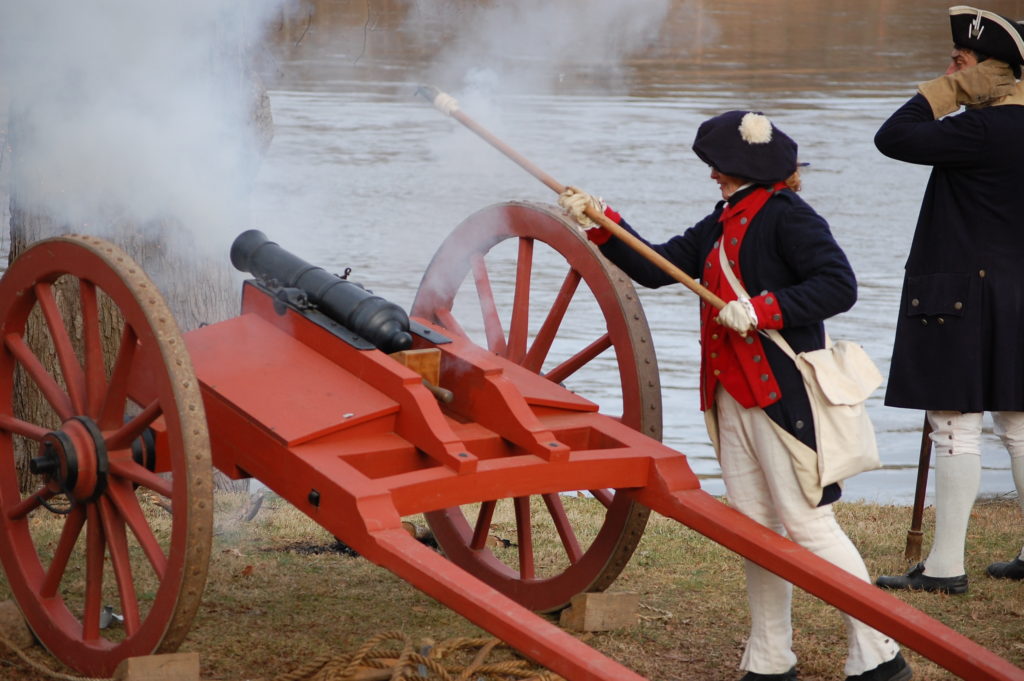
Getting 2,400 soldiers across an ice-choked river under the cover of darkness and in the middle of a blinding Nor’easter was certainly a feat. But it’s only part of the story: Washington’s covert plan hinged on being able to get artillery and horses across the river, too.
In early December, Washington’s soldiers gathered boats from the New Jersey side of the Delaware River and brought them across to Pennsylvania. Along with large Durham boats, they slowly but surely transported the men across the river.
But these boats would have been an impractical choice for anxious horses and cumbersome cannons. How, then, were they moved?
In short: by ferry.
“It’s not a coincidence that the crossing points originally plotted by George Washington were ferry crossings,” explains Kimberly McCarty, the park’s curator. “If it weren’t for the artillery and horses, the crossing could have occurred pretty much anywhere. But the ferries were absolutely necessary for getting the artillery and horses across the river.”
The ferries of the time were simple, flat-bottomed vessels. Under normal circumstances, one ferry could transport a couple of horses, their wagon, its passengers, and the ferry’s three-man crew with room to spare. The ferry was also equipped with ramps at both ends that folded up and eased the loading and unloading process.
Washington and his troops began crossing with approximately 18 cannons and 50 horses from McConkey’s Ferry to Johnson Ferry, directly across the river, around 6 PM on December 25, 1776. Meanwhile, Washington was expecting the support of two other divisions that were supposed to be crossing south of Trenton at about the same time.
However, poor weather and ice jams on the river kept General Ewing from even attempting to cross with his soldiers. Colonel John Cadwalader managed to get most of his men across at Dunk’s Ferry after the river at Neshaminy Ferry, their original launch point, proved to be impassable. But when he discovered large chunks of ice had piled up on the riverbank, he ordered his men to return to Pennsylvania.
“It was by no means a static situation,” McCarty says.
Back at McConkey’s Ferry, progress was incremental, but the boats and the ferries were able to continue traversing the river well into the early morning. At that time, the last of the soldiers, horses and artillery arrived at Johnson Ferry.

